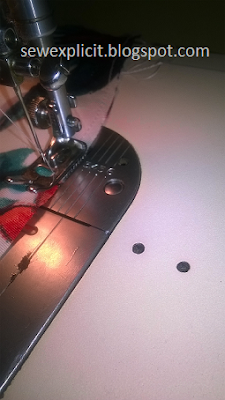Bias Binding Tutorial

This is a type of edge/hem finishing, this tutorial shows how to sew a bias binding. It can be used at the neck, hem, armholes etc or even to finish a seam where it is known as "Hong Kong" finish. Bias tapes can be brought ready-made or you can make your own. Today's sample is made using pre-made post. A bias binding that will finish 1/4" when bound will measure a total of 1" tape when unfolded (i.e 1/4"×4): in the same vein, a bias tape that will finish as 3/8" will measure 1.5" when unfolded. The most common bias tape in Nigerian markets measures 1" when unfolded and will finish 1/4" when used for binding. This type is actually called "1/2 inch single fold bias tape" because it measures 1/2" till when unfolded. It should be noted that an edge to be bound doesn’t require seam allowance, as sewing a binding merely wraps (or binds) around that particular edge and doesn’t take in any seam allowance. You can sew a bia...





